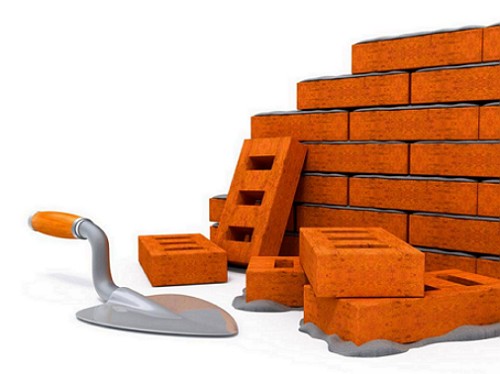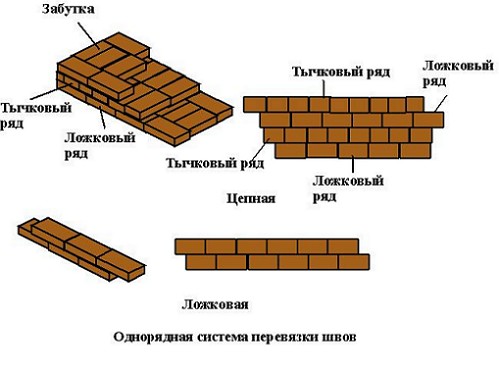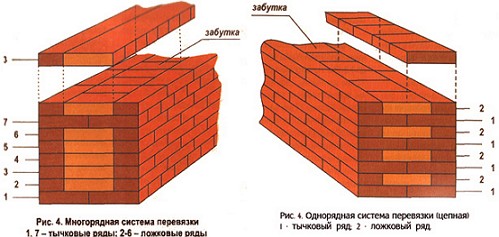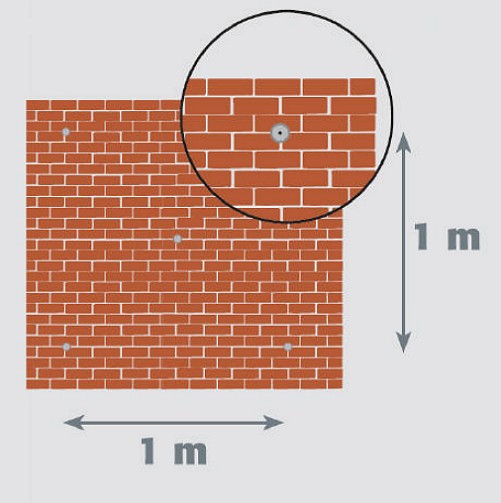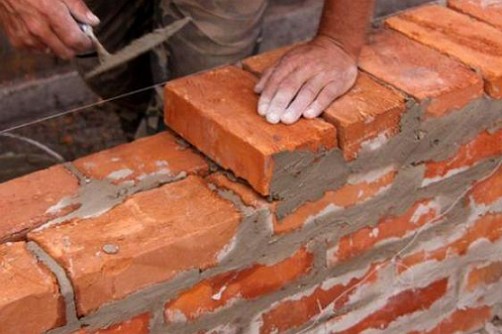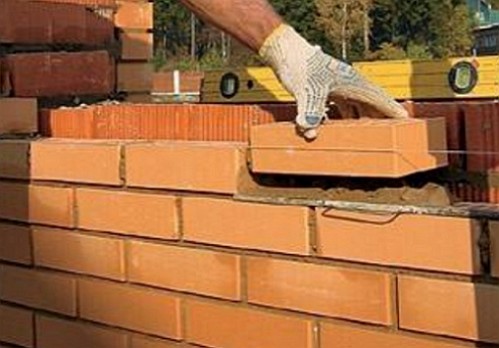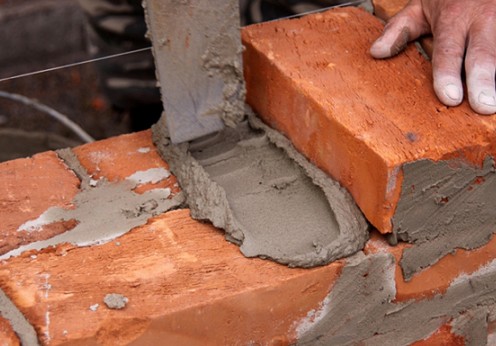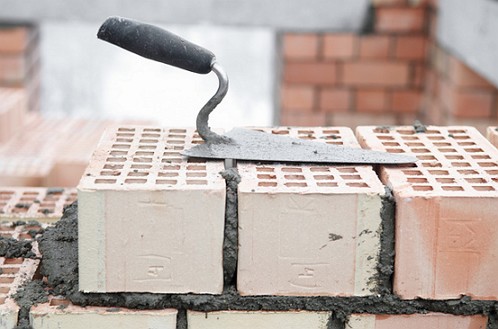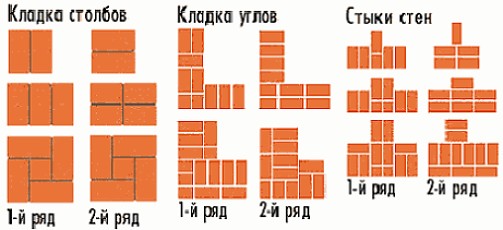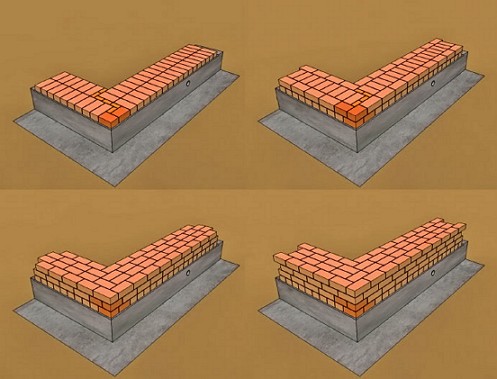Any brick house has distinct advantages: it is attractive appearance, strength and durability, as well as the reliability of masonry walls. Due to the structure of the material, the brick walls keep the heat inside the house and slowly warm up in the summer. And even if, after building the walls, you do not like the look, how to paint the front of the house with your own hands, you can decide by consulting with specialists and designers.
In addition, the correctly erected brick wall of the house will last a long time. By what rules is it recommended to make brickwork?
Content
Brick used for masonry
The most popular material for the construction of the walls of the house is a brick. Brick wall masonry can be made from brick of standard sizes 250x120x65 mm.
Professional builders produce masonry of external walls in one and a half or two bricks, bearing internal walls in one and a half bricks, and internal partitions in polkirpicha with bandaging armature. If further lining of brick walls is provided by plastering, the seams are not filled with a mortar to a depth of 2 cm.
Laying bricks along the walls forms rows of spoons, and bricks laid across - tie-rods.
The seaming system is designed for the following types of masonry:
• Single row
• multi-row
• Three-row.
The masonry of external walls is made by a certain technology, taking into account traditional rules.
This depends on the construction of the wall being erected, so a certain amount of brick is used.
So, for example, for a wall of continuous masonry with a groove of external and subsequent internal plaster, the thickness of 380 mm will require 152 ordinary or clay bricks. Before you begin to implement the laying of the exterior walls of the house, you must make accurate calculations of the number of bricks and choose the type of masonry mortar.
What are the types of wall masonry
For different types of walls of buildings there are different types of masonry brick. There are such types of masonry:
• solid of full bricks
• solid hollow bricks
• Lightweight well
• Lightweight with horizontal dressings
• lightweight three-layer with insulation.
Traditionally, when building brick walls with cladding, the process of erection starts from the corners of future walls. Therefore, for the beginning, the outer boundary of the walls to be erected is designated and corners are displayed. For these purposes, construct U-shaped structures, and then start the construction of angles.
The process of building corners for subsequent laying is shown in this video.
After finishing the installation of the corners of the house or cottage, you can begin to make the installation of walls. To do this, use the following types of masonry.
continuous masonry
Solid masonry made of bricks solid in terms of bricks will be 2.5 bricks or the length of a single brick.
Solid masonry of hollow bricks laid out in 2 bricks.
If a technological air layer is provided, then the masonry is not made with a tight junction of the bricks. Such an air gap or gap is filled with a heater in the future.
For a significant reduction in the mass of the walls to be erected, a well is used.
lightweight masonry
Lightweight well wall laying laid out in 2 bricks. A feature of lightweight wall masonry is the laying of the transverse wall. When laying along the length of the brick, a transverse wall is laid between each layer 3 between the layers. To prevent the formation of voids they fill with expanded clay or slag.
Another economical way to reduce the cost and consumption of the material is to erect walls using lightweight masonry with horizontal bunches. The principle of masonry in this case is analogous to a lightweight sludge masonry, allowing the filling of voids with expanded clay.
Lightweight three-layer masonry is the most laborious. Initially, a wall of full-bodied or hollow bricks is erected. Then a layer of insulation up to 10 cm thick is laid.
Finally, the insulation covers the facing layer, which is half a brick. To strengthen the design of the three-layer masonry, a metal reinforcing mesh is used.
The most useful advice on the correct and economical laying of walls with their own hands is presented here.
On which mortar is brick laying
Brick wall masonry is carried out on cement or mixed mortars. The most common and widespread mortar for masonry consists of a standard mixture of cement, sand and water. Evaluation of the characteristics and properties of mortar mortar is indicated by a mark that indicates its strength. The most common brands of solution are: 4,10, 25, 50 and 75. A valuable indicator of mortar solution can be called its mobility.
Under the mobility of the masonry mortar is the ability to spread the mixture from the effects of its own mass. The mobility of the solution can be estimated by the depth of immersion. So, for example, for the erection of brick walls using full-bodied bricks, the mobility of mortar for masonry is in the range of 9 to 13 cm, and from hollow bricks this will already be other figures, namely 7-9 cm.
In addition, the composition and type of the solution depends on the purpose of the masonry part being built and the grade of bricks.
For example: the composition of mortar solution for the ground part of the building in dry ground with the use of cement-sand mortar to achieve mobility 75 will be determined in the following proportions - 1: 0.3: 4. Thus, for brickwork, it is recommended to choose solid bricks 75 and masonry mortar on portland cement of grade 400, which will consist of 1 part by volume of cement, 0.3 parts of sand with mobility 4.
The dressing of seams to prevent the destruction or delamination of the walls in this case is mandatory.
It should be remembered that when building walls, the amount of solution will be as follows:
• masonry using solid brick - 25 percent solution
• masonry from multi-bricks - 21 percent
• masonry of hollow bricks - 14 percent
• large blocks - 4 percent.
In this case, the consumption of mortar for masonry will depend on the method of application, either over the entire width of the masonry, or by strips.
How to make the preparation of the solution with your own hands for laying the walls of the house will tell this video.
It does not hurt to remember that all types of bricks are used to erect low-rise buildings. When facing the facades of houses and cottages, preference is given to facing ceramic bricks.



